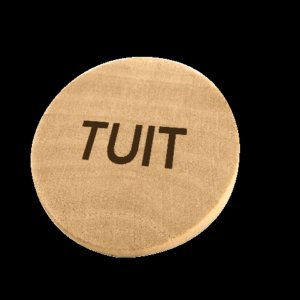- Joined
- Jan 2, 2018
- Messages
- 373
- Reaction score
- 315
I will try and add a Youtube vid on what the title calls Yooperlites. Two days before this video appeared I picked up a stone almost identical to the stone at 19 seconds, stop the vid and see.
In daylight the stone is mottled / speckled grey, whites and blacks. So I got into the hall closet with the stone and a UV torch and there it is, the same identity as the one in the video.
Clearly, I reside in Australia and here were these stones, on our beach. I suspect that they are a porphyritic andesite / volcanic breccia, but investigation reveals:
Andesite Porphyry:
Occasionally, andesites contain large, visible grains of plagioclase, amphibole, or pyroxene. These large crystals are known as "phenocrysts." They begin forming when a magma, which is cooling at depth, approaches the crystallization temperature of some of its minerals. These high-crystallization-temperature minerals begin forming below the surface and grow to visible sizes before the magma erupts.
When the magma erupts onto the Earth's surface, the rest of the melt crystallizes quickly. This produces a rock with two different crystal sizes: large crystals that formed slowly at depth (known as "phenocrysts"), and small crystals that formed quickly at the surface (known as "groundmass" . "Andesite porphyry" is the name used for these rocks with two crystal sizes.
This beach also has specimens of lace agate and a very suspicious stone that has a lot of nephrite qualities about it, which I will suss out further with a density test, etc, as soon as I get a round tuit.
Watch: https://youtu.be/-rb6AbcCfU0
or: http://youtu.be/-rb6AbcCfU0
In daylight the stone is mottled / speckled grey, whites and blacks. So I got into the hall closet with the stone and a UV torch and there it is, the same identity as the one in the video.
Clearly, I reside in Australia and here were these stones, on our beach. I suspect that they are a porphyritic andesite / volcanic breccia, but investigation reveals:
Andesite Porphyry:
Occasionally, andesites contain large, visible grains of plagioclase, amphibole, or pyroxene. These large crystals are known as "phenocrysts." They begin forming when a magma, which is cooling at depth, approaches the crystallization temperature of some of its minerals. These high-crystallization-temperature minerals begin forming below the surface and grow to visible sizes before the magma erupts.
When the magma erupts onto the Earth's surface, the rest of the melt crystallizes quickly. This produces a rock with two different crystal sizes: large crystals that formed slowly at depth (known as "phenocrysts"), and small crystals that formed quickly at the surface (known as "groundmass" . "Andesite porphyry" is the name used for these rocks with two crystal sizes.
This beach also has specimens of lace agate and a very suspicious stone that has a lot of nephrite qualities about it, which I will suss out further with a density test, etc, as soon as I get a round tuit.
Watch: https://youtu.be/-rb6AbcCfU0
or: http://youtu.be/-rb6AbcCfU0




